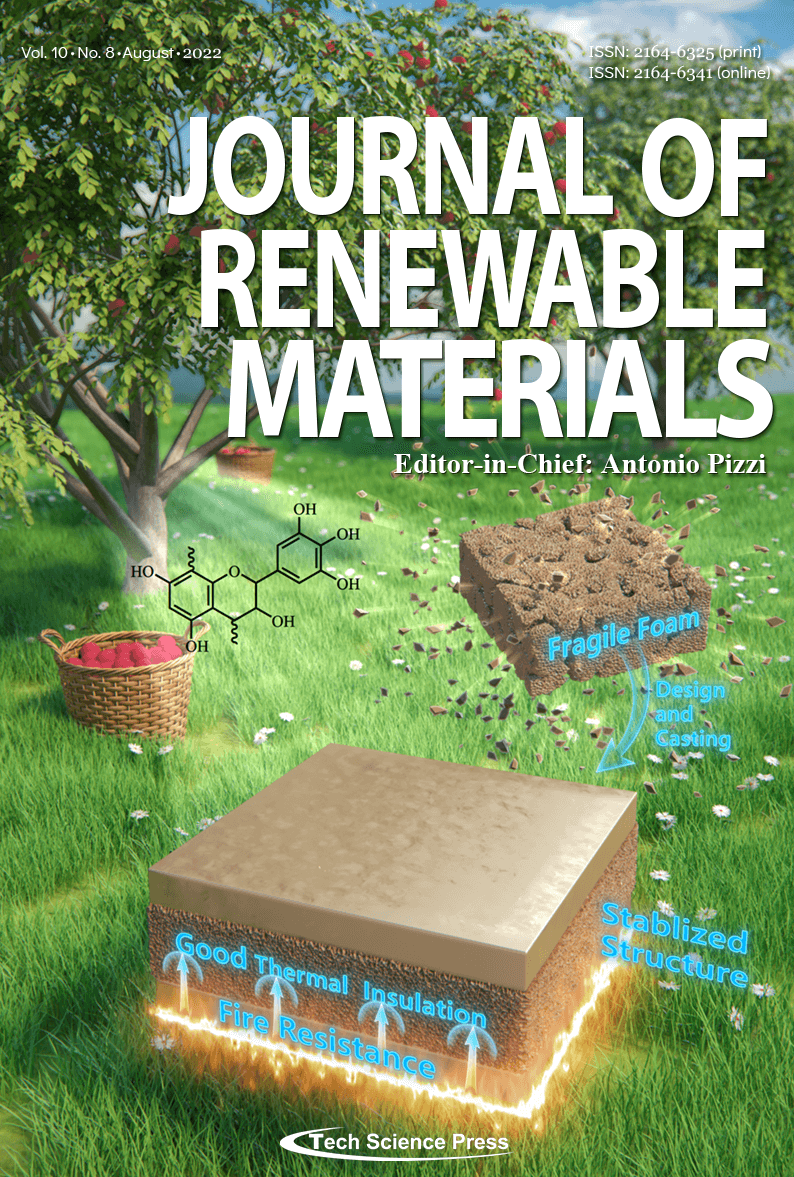A Review on Strengthening of Timber Beams Using Fiber Reinforced Polymers
Bingyu Jian1,2, Ke Cheng3, Haitao Li1,2,*, Mahmud Ashraf2,4, Xiaoyan Zheng1,2, Assima Dauletbek1,2, Mahdi Hosseini1,2, Rodolfo Lorenzo5, Ileana Corbi6, Ottavia Corbi6, Kun Zhou7
Journal of Renewable Materials, Vol.10, No.8, pp. 2073-2098, 2022, DOI:10.32604/jrm.2022.021983
- 25 April 2022
Abstract Fiber reinforced polymer (FRP) has been used in the construction industry because of its advantages such as high
strength, light weight, corrosion resistance, low density and high elasticity. This paper presents a review of bonding techniques adopted to strengthen timber beams using FRP to achieve larger spans. Different methods of
bonding between FRP and timber beams have been summarized with a focus on the influencing factors and their
effects as well as relevant bond-slip models proposed for fundamental understanding. Experimental investigations
to evaluate the flexural performance of timber beams strengthened by FRP bars, sheets and More >
Graphic Abstract
